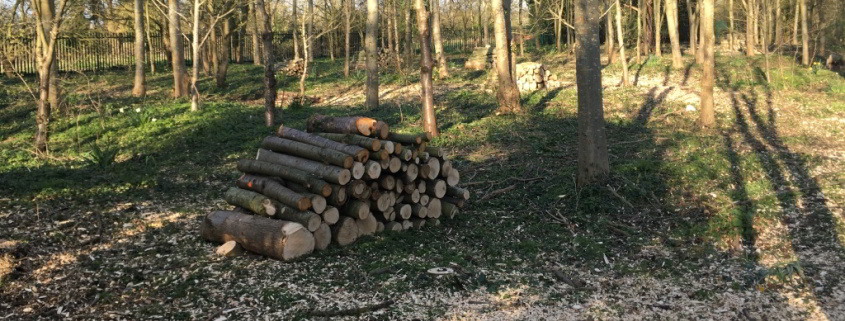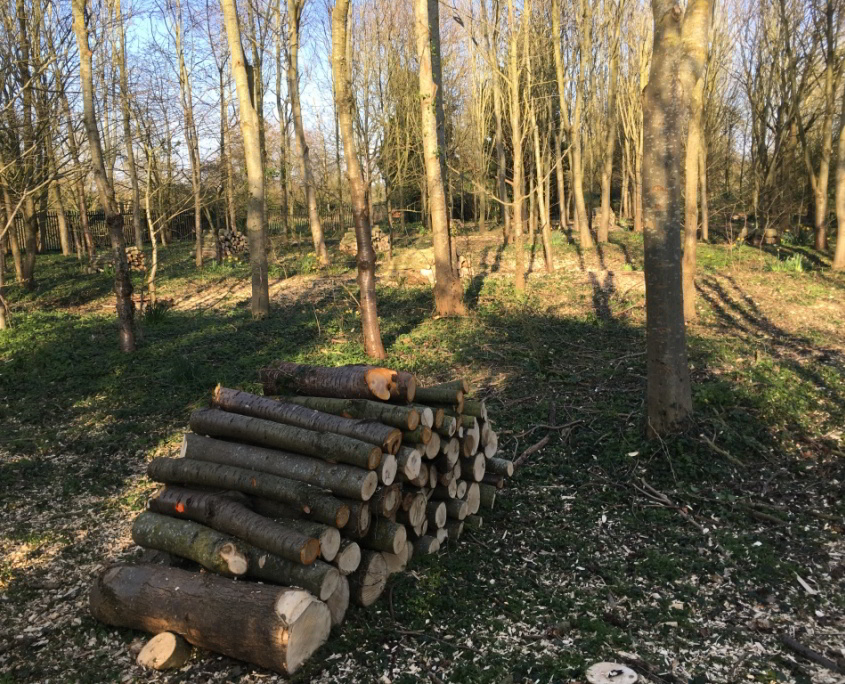Woodlands are a valuable multifunctional feature within the well managed landscape of our countryside. The management of woodland for timber production is often the primary purpose however a timber crop requires a long period of time to grow to maturity before it can be harvested.
While the timber trees grow on to maturity woodlands are utilised for a variety of alternative purposes to help generate an income from the natural beauty of such a magical habitat.
Coppice Management
Coppice management is one of the oldest silvicultural systems known to man involving the systematic cutting of a broadleaf species back to the stump or “stool” in order to produce fresh growth. Areas of coppiced woodland are cut on cycles depending on the product to be made from the wood which could include firewood, charcoal, and rural woodland crafts. Many old traditional coppiced types of woodland have been neglected in past years but can easily be managed to their former glory.
Short Rotation Coppice Management
Short Rotation Coppice Management or Biomass Forestry is regarded more as an agricultural practice as oppose to a woodland management system. Willow and Poplar species are planted for their quick growing ability and harvested mechanically on far shorter cycles than traditional coppice management systems. Biomass produced from this intensive system is then burnt in suitable heating systems to produce both heat and electricity. In recent years Woodland Grant Schemes have begun to fund the establishment of biomass crops to offset carbon dioxide emissions. Biomass Grant schemes can be beneficial to landowners where land is not suitable for agricultural based crops.
Timber Production Woodlands
Woodlands and Forests were and still are primarily planted for the production of timber crops with the old phrase “a wood that pays is a wood that stays”. Once a timber crop reaches maturity, its then sustainably harvested and processed into various timber products. We pride ourselves on working in conjunction with woodland owners to assist in the production of high quality timber crops utilising various Silviculture techniques. British timber crops are constantly competing against international timber imported from around the world. Thus achieving the highest quality timber for our woodland owners is of the utmost importance.
Recreational Woodland
Woodlands can provide a diverse range of recreational opportunities with potential economical benefits to the woodland owner when managed effectively and sympathetically to the natural habitat. Recreational activities help stimulate and educate the public while also supporting future woodland management. Woodland owners are governed under the Owners and Occupiers Liability Act 1957/1984 to ensure that any visitor is reasonably safe from harm for the purpose of their visit to the woodland. We can provide regular inspections of your woodland to avoid any potential accidents to occur due to a foreseeable failure, often associated with a tree’s structure, utilising our arboricultural knowledge.
Conservation/Wildlife Friendly Woodland
Woodland habitats support a vast array of birds, mammals, invertebrates, fungi, lichen and mycorrizae species which all depend on alternative features within the woodland ecosystem. Proper management of your woodland habitat can yield both economical and conservation based benefits.
Areas of woodland that support high conservation species, for example Ancient semi-natural woodland, are often designated as Special Sites of Scientific interest or SSSI. We can help woodland owners meet the strict criteria set out by Natural England for the conservation management of these unique woodland habitats.


